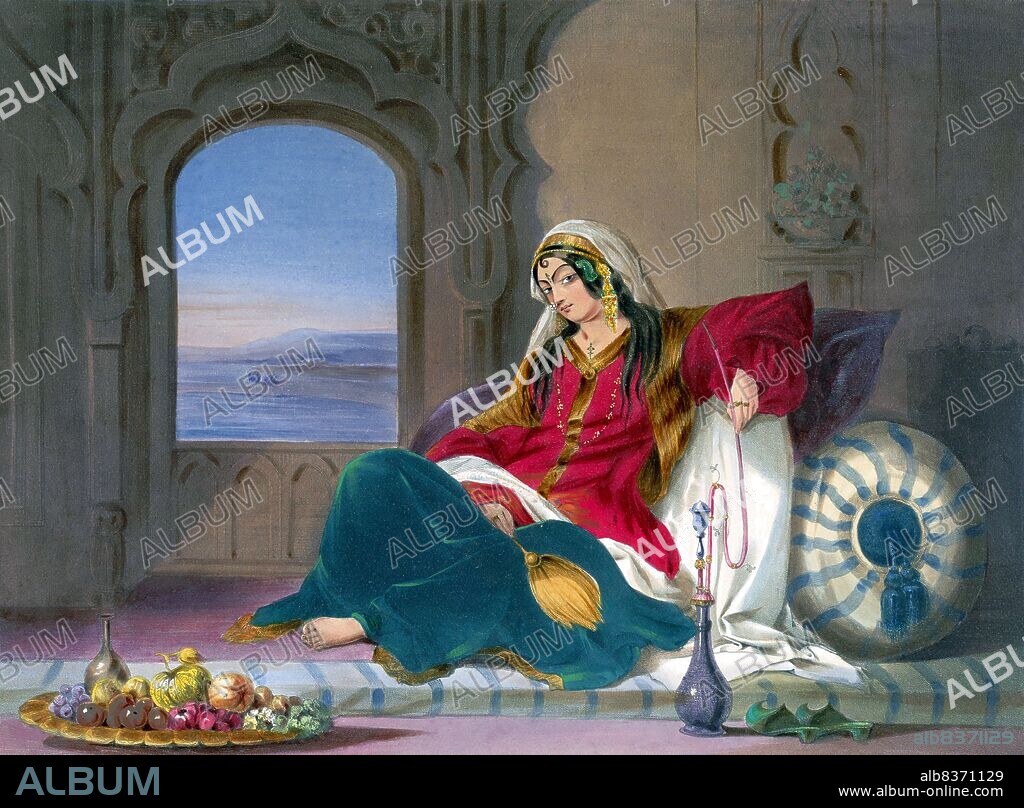alb8371129
Afghanistan: 'Begum Jan, a Kandahar Lady of Rank, Engaged in Smoking', colour lithograph, Lieutenant James Rattray,1848

|
Zu einem anderen Lightbox hinzufügen |
|
Zu einem anderen Lightbox hinzufügen |



Haben Sie bereits ein Konto? Anmelden
Sie haben kein Konto? Registrieren
Dieses Bild kaufen.
Nutzung auswählen:

Titel:
Afghanistan: 'Begum Jan, a Kandahar Lady of Rank, Engaged in Smoking', colour lithograph, Lieutenant James Rattray,1848
Untertitel:
Siehe automatische Übersetzung
Kandahar (Ancient Greek, Alexandria Arachosia) is the second largest city in Afghanistan, with a population of about 468,200 as of 2006. It is the capital of Kandahar province, located in the south of the country at about 1,005 m (3,297 feet) above sea level. The Arghandab River runs along the west of the city.
. Kandahar is a major trading center for sheep, wool, cotton, silk, felt, food grains, fresh and dried fruit, and tobacco. The region produces fine fruits, especially pomegranates and grapes, and the city has plants for canning, drying, and packing fruit.
. Many empires have long fought over the city, due to its strategic location along the trade routes of Southern and Central Asia. In 1709, Mirwais Hotak made the region an independent kingdom and turned Kandahar into the capital of the Hotaki dynasty. In 1747, Ahmad Shah Durrani, founder of the Afghan Empire, made it the capital of modern Afghanistan.
. From 1996 to 2001, Kandahar served as the capital of the Islamic Emirate of Afghanistan. Since 2002, the city is slowly being rebuilt.
. Kandahar is a major trading center for sheep, wool, cotton, silk, felt, food grains, fresh and dried fruit, and tobacco. The region produces fine fruits, especially pomegranates and grapes, and the city has plants for canning, drying, and packing fruit.
. Many empires have long fought over the city, due to its strategic location along the trade routes of Southern and Central Asia. In 1709, Mirwais Hotak made the region an independent kingdom and turned Kandahar into the capital of the Hotaki dynasty. In 1747, Ahmad Shah Durrani, founder of the Afghan Empire, made it the capital of modern Afghanistan.
. From 1996 to 2001, Kandahar served as the capital of the Islamic Emirate of Afghanistan. Since 2002, the city is slowly being rebuilt.
Bildnachweis:
Album / Universal Images Group / Pictures From History
Freigaben (Releases):
Model: Nein - Eigentum: Nein
Rechtefragen?
Rechtefragen?
Bildgröße:
5000 x 3685 px | 52.7 MB
Druckgröße:
42.3 x 31.2 cm | 16.7 x 12.3 in (300 dpi)
Schlüsselwörter:
AFGHANISTAN • ASIEN • ASIEN, KONTINENT • FRAU • FRAUEN • GEMAELDE • ISLAM • ISLAMISCH • JAMES RATTRAY • KONTINENT, ASIEN • KUNST • LITHOGRAPH • LITHOGRAPHIE • MALEREI • MODE • MOHAMMEDANER • MOHAMMEDANERIN • MOSLEM • MOSLEMIN • MUSLIM • MUSLIMIN • RAUCHEN • STIL • TABAK • TECHNIK: LITHOGRAPHIE • WEIBCHEN • WOMAN
 Pinterest
Pinterest Twitter
Twitter Facebook
Facebook Link kopieren
Link kopieren Email
Email
